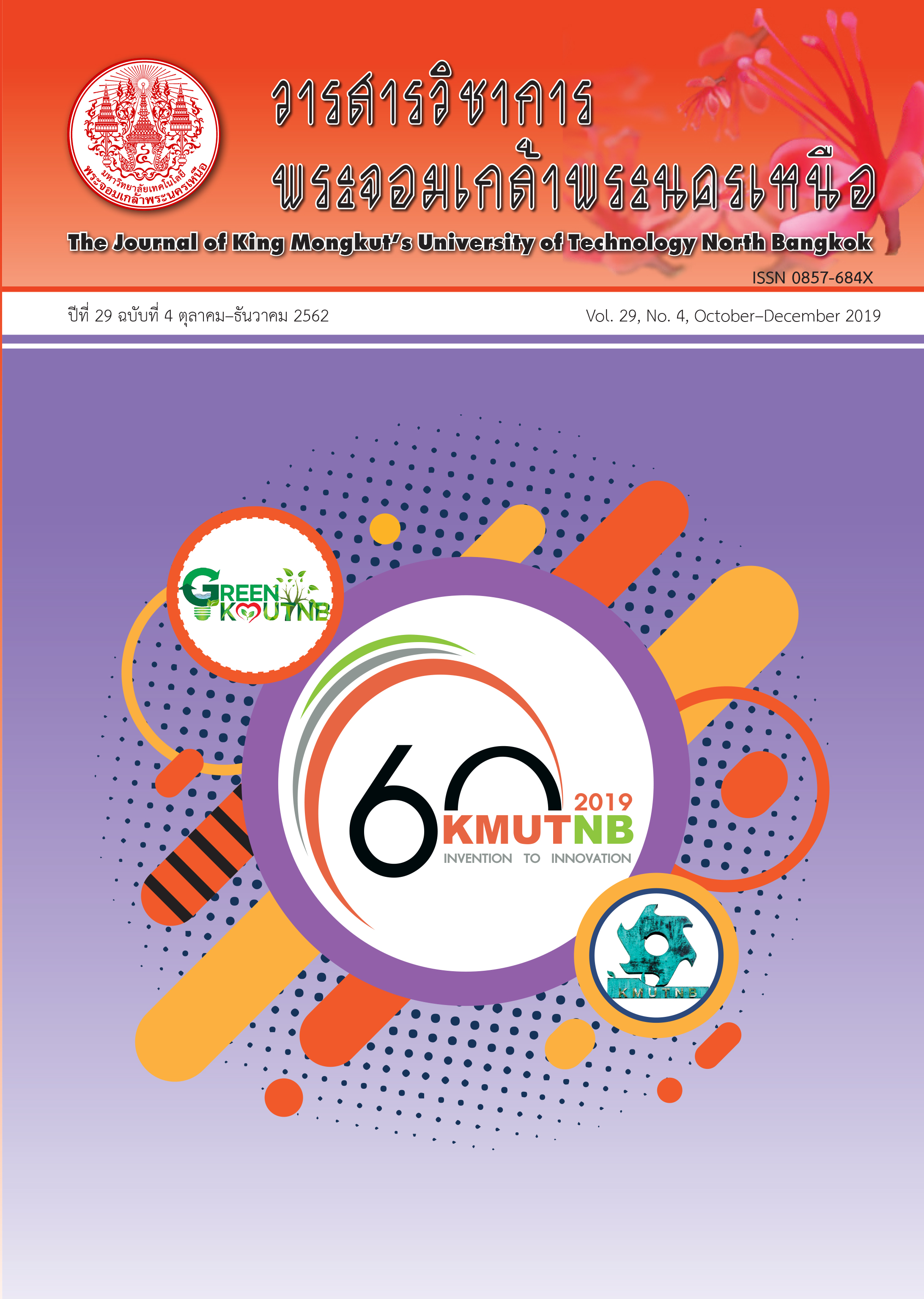Economic Analysis of Flexible Pavement Reinforced with Geosynthetics in Thailand for New Construction and Overlay
Main Article Content
Abstract
This research project deals with an economic study for construction and repair of flexible pavement reinforced with Geosynthetics in Thailand. The economic model is studied using the financial model, Net Present Value (NPV) and Internal Rate of Return (IRR) by the discounted cash flow technique at a discount rate of 12% (according to the government’s investment policy). The benefit-cost-ratio (B/C) is then investigated for the use of Geosynthetics as the repair materials and/or overlays. The result of the research could be served as construction and/or repair of flexible pavement information for repair and maintenance programs in Thailand.
Article Details
The articles published are the opinion of the author only. The author is responsible for any legal consequences. That may arise from that article.
References
[2] Y. H. Huang, Pavement Analysis and Design, 2nd ed. New Jersey: Pearson Prentice-Hall, 2004.
[3] AASHTO Guide for design of pavement structures, 4th ed. Washington D.C.: American Association of State Highway and Transportation Officials (AASHTO), 2002.
[4] R. A. Austin and A. J. T. Gilchrist, “Enhanced performance of asphalt pavements using geocomposites,” Geotextiles and Geomembranes, vol. 14, no. 3, pp. 175–504, 1996.
[5] A. Bhandari and J. Han, “Investigation of geotextile-soil interaction under cyclic wheel load using the discrete element method,” Geotextiles and Geomembranes, vol. 28, no. 1, pp. 33–43, 2010.
[6] J. P. Giroud and J. Han, “Field observation on stabilization of unpaved roads with geosynthetics - Part I: Theoretical development,” Journal of Geotechnical and Geoenvironmental Engineering, vol. 130, pp. 776–786, 2004.
[7] E. M. Palmeira, “Soil-geosynthetic interaction : Modelling and analysis,” Geotextiles and Geomembranes, vol. 27, no. 5, pp. 368–390, 2009.
[8] H. Wu, B. Huang, X. Shu, and S. Zhao, “Evaluation of geogrid reinforcement effects on unbound granular pavement base courses using loaded wheel tester,” Geotextiles and Geomembranes, vol. 43, no. 5, pp. 462–469, 2015.
[9] I. L Al-Qadi, S. Dessouky, E. Tutumluer, and J. Kwon, “Geogrid mechanism in low-volume flexible pavements: Accelerated testing of full-scale heavily instrumented pavement sections,” International Journal of Pavement Engineering, vol. 12, no. 2, pp. 121–135, 2011.
[10] Q. Chen, S.Hanadeh, M. Abu-Farsakh, and L. Mohammad, “Performance evaluation of full-scale geosynthetic reinforced flexible pavement,” Geosynthetics International, vol. 25, no. 1, pp. 26–36, 2018.
[11] X. Tang, M. Abu-Farsakh, S. Hanandeh, and Q. Chen, “Performance of reinforced and stabilized unpaved test sections built over native soft soil under full-scale moving wheel loads,” Transportation Research Record Journal of the Transportation Research Board, no. 2511, pp. 81–89, 2015.
[12] S. W. Perkins, J. J Bowders, B. R. Christopher, and R. R. Berg, “Geosynthetic reinforcement for pavement systems: US per-spectives,” presented at the Geo-Frontiers Congress 2005, October 2005.
[13] S. H. Yang and I. L. Al-Qadi, “Cost-effectiveness of using geotextiles in flexible pavement,” Geosynthetic International, vol. 14, no. 1, pp. 2–12, 2007.
[14] T. Imjai, K. Pilakoutas, and M.Guadagnini, “Performance of geosynthetic-reinforced flexible pavements in full-scale field trials,” Geotextiles and Geomembranes, vol. 47, no. 2, pp. 217–229, 2019.
[15] T. Imjai, A. Sawangsuriya, and M. Dechasakulsom, “Effectiveness of geosynthetic-reinforced flexible pavements: Full-scale testing and fe analysis,” presented at the International Symposium on Design and Practice of Geosynthetic-Reinforced Soil Structures, at Bologna, Italy, October 2013.
[16] R. B. Mallick and T. El-Korchi, Pavement Engineering Principles and Practice. Florida: CRC Press Inc, 2013.

